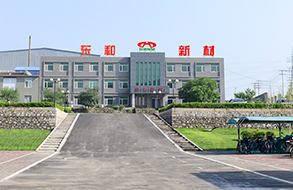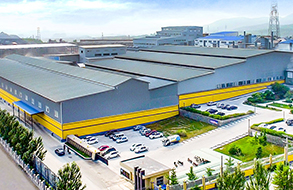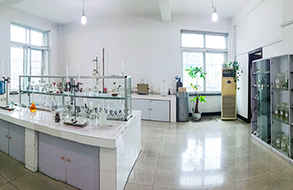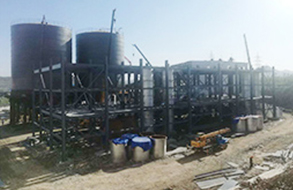Low threshold hurts magnesia industry
----Interview with Zhao Quan
Vice-General Manager
Liaoning Donghe New Material Co., Ltd.
- Founded in 1996, Liaoning Donghe New Material Co., Ltd. is a leading company engaging in comprehensive application of magnesite resources. It was granted the title of Provincial-Level Engineering Technology Research Center in 2014, the only one Demonstration Engineering Company for Comprehensive Application of Magnesite by MIIT in 2015 and the High-Tech Company in 2016. It was listed in New Three Board in 2016 with the security abbreviation of Donghe New Material and the stock code of 839792. Donghe New Material is now a company with complete industrial chain, strong competitiveness and vibrant development.
- Asian Metal: Hello, Mr. Zhao! Please make a brief introduction to your company firstly.
- Mr. Zhao: Founded in 1996, Donghe New Material is a leading company focusing on comprehensive application of magnesite resources. Its main products include caustic calcined magnesium oxide, fused magnesium oxide, monolithic refractory and refractory brick and it supplies services of design and manufacturing of refractories used in various kilns to steel mills. The company owns over 600 employees with total registered capitals of RMB133.53 million (USD18.97 million), covering over 130,000 square meters. It was granted the title of Provincial-Level Engineering Technology Research Center in 2014, the only one Demonstration Engineering Company for Comprehensive Application of Magnesite by MIIT in 2015 and the High-Tech Company in 2016. It was listed in New Three Board in 2016 with the security abbreviation of Donghe New Mateial and the stock code of 839792. Donghe New Material is now a company with complete industrial chain, strong competitiveness and vibrant development. Haicheng Donghe Taidi Metallurgical Furnace Material Co., Ltd. is a wholly-owned subsidiary of Donghe New Material.


- Asian Metal: Would you mind to share with us the magnesia market condition over the past two years?
- Mr. Zhao: The Chinese magnesite industry has undergone ups and downs in recent two years. Measures on environmental improvement and mining control make magnesite companies realize that they can't develop in future if they refuse to improve themselves, maintain green production and upgrade the industry to gain economics of scale.
- China produced 23.45 million tons of refractories in 2018, up by 2.3% YOY. In particular, the output for shaped refractory products was 13.27 million tons, up by 2.33% YOY; that of unshaped refractory products was 9.64 million tons, up by 2.10% YOY. In 2018, China exported 6.35 million tons of refractory raw materials, down by 0.54% YOY. Due to soft demand yet large volumes of stocks, the Chinese refractory market sees unbalanced supply-demand now and prices decline accordingly. We expect that it would be hard for the market to improve in short term due to many unfavorable factors.
- Asian Metal: What are major problems in current magnesia industry?
- Mr. Zhao: These problems include constant supply shortage for high quality magnesite, overcapacity caused by redundant construction, lower export volume and export price, backward technology and equipment, great pressure resulted from strict requirements on energy reduction and pollution control. In a word, there is an urgent need to upgrade the magnesite industry.
- Asian Metal: What is the major reason for continuous decline of magnesia price in 2019?
- Mr. Zhao: There are several reasons for magnesia prices to drop continuously in 2019. Firstly, prices were too high to be reasonable in the past two years. Secondly, the supply has increased so far in 2019 as a result of many newly-added projects. Thirdly, the output of magnesite is still high in spite of the implementation of measures on mining control, but the supply of high quality magnesite remains tight. Fourthly, the export volume declined as overseas producers launch production. Lastly, many producers are forced to compete on prices in order to survive.
- Asian Metal: The demand from steel mills has declined so far in 2019 compared with the same period in previous years as they are cautious about making purchases. Meanwhile, the consumption volume from real estate, infrastructure, vehicle manufacturing and other terminal industries has shrunk. What do you think of the phenomena? How about the demand in the future and when do you expect the demand to increase?
- Mr. Zhao: In spite of decreased demand from real estate, infrastructure and vehicle manufacturing and other sectors, the demand from steel industry is not expected to shrink. The crude steel output in China has actually exceeded 900 million tons. We think that the crude steel output wouldn't decrease in the following years and thus the demand for refractories from steel industry wouldn't weaken. However, refractory prices are not expected to rebound to the high level in 2017 and 2018. Refractory producers see shrinking profits now, but still have possibility to reap economies of scale as long as they strengthen management.
- Asian Metal: What are the influences brought by the mining ban and supply control of magneiste on magnesia industry?
- Mr. Zhao: Current measures on supply control and mining ban of magnesite make it difficult for magnesia producers to source raw materials. Meanwhile, magnesite prices are unstable. Thus, magnesia producers see unstable production costs and can't maintain steady production.
- Asian Metal: What is the reason for overcapacity of magnesia industry in your opinion and what do you think of it in the future?
- Mr. Zhao: We mainly attribute the overcapacity of magnesia industry to the lack of restriction on the qualification of producers. There are a large proportion of small and micro enterprises that do not have the corresponding technical level and environmental protection capacity. This problem must be solved by improving market mechanism and administration methods (technology, fund and environmental protection), restructuring & upgrading and the introduction of competition system.
- Asian Metal: What do you think of the development trend of magnesite product industry in the future?
- Mr. Zhao: In order to realize further development, magnesite product companies must use new kilns and conduct cooperation with universities and research institutes in order to put more scientific achievements into practice. Meanwhile, relevant governmental department must launch campaigns for comprehensive management (environmental protection, mining integration and so on) and eliminate some small and unqualified companies during the process. In addition, relevant government department must formulate appropriate policies to improve requirements on launching production and guide the development of the industry.
- Asian Metal: What will you do to adapt to the changed market and survive and develop within the context of the current sluggish market?
- Mr. Zhao: Generally speaking, we must improve ourselves and reduce our production costs. We must improve our competitiveness by enhancing our automation level and ability to source resources. At the same time, we should adjust our product structure, improve product quality and seek more customers so as to adapt to the changed market.






